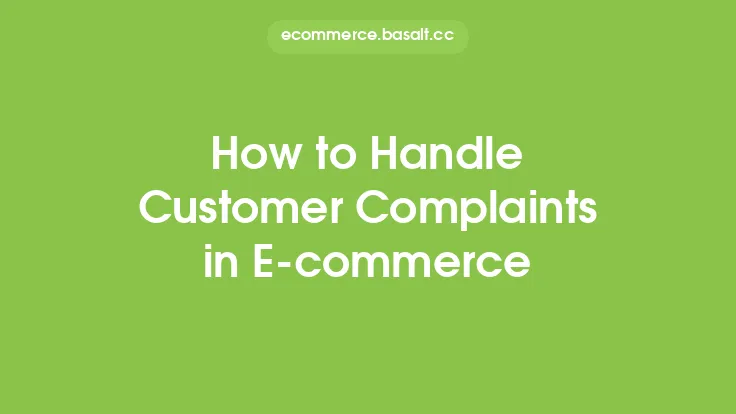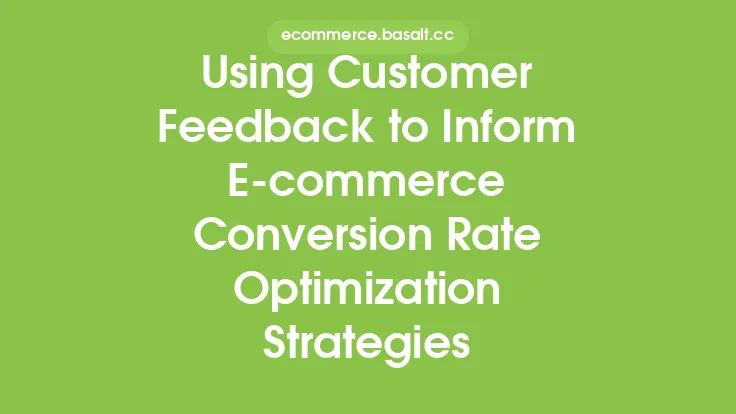Improving customer satisfaction is a crucial aspect of e-commerce marketing, as it directly impacts customer loyalty, retention, and ultimately, the bottom line. In today's competitive online marketplace, providing an exceptional customer experience is no longer a luxury, but a necessity. With the rise of e-commerce, customers have come to expect a seamless, personalized, and efficient shopping experience. To meet these expectations, online retailers must focus on delivering high-quality products, providing excellent customer service, and creating a user-friendly website. In this article, we will explore 10 ways to improve customer satisfaction in e-commerce, highlighting the importance of understanding customer needs, streamlining the shopping process, and leveraging technology to enhance the overall customer experience.
Understanding Customer Needs
To improve customer satisfaction, it is essential to understand the needs and preferences of your target audience. This can be achieved through market research, customer surveys, and social media listening. By gathering insights into customer behavior, preferences, and pain points, e-commerce businesses can tailor their products, services, and marketing strategies to meet the evolving needs of their customers. For instance, a fashion e-commerce website may use customer feedback to introduce a new line of products that cater to a specific demographic, such as plus-size clothing or sustainable fashion. By demonstrating a commitment to understanding and meeting customer needs, e-commerce businesses can build trust, loyalty, and ultimately, drive customer satisfaction.
Streamlining the Shopping Process
A seamless and efficient shopping process is critical to improving customer satisfaction in e-commerce. This can be achieved by simplifying navigation, reducing checkout friction, and providing clear product information. A well-designed website with easy-to-use interfaces, high-quality product images, and detailed product descriptions can help customers quickly find what they are looking for and make informed purchasing decisions. Additionally, implementing features such as guest checkout, one-click ordering, and express shipping can further streamline the shopping process, reducing cart abandonment rates and increasing customer satisfaction.
Leveraging Technology to Enhance Customer Experience
Technology plays a vital role in enhancing the customer experience in e-commerce. From artificial intelligence (AI) and machine learning (ML) to augmented reality (AR) and virtual reality (VR), there are numerous technologies that can be leveraged to create a more immersive, personalized, and engaging shopping experience. For example, AI-powered chatbots can provide 24/7 customer support, helping customers with queries, returns, and exchanges. Similarly, ML algorithms can be used to offer personalized product recommendations, while AR and VR can enable customers to visualize products in a more interactive and engaging way.
Providing Multiple Payment Options
Providing multiple payment options is another way to improve customer satisfaction in e-commerce. By offering a range of payment methods, including credit cards, PayPal, Apple Pay, and Google Pay, online retailers can cater to different customer preferences and reduce cart abandonment rates. Additionally, implementing features such as payment plans, financing options, and price matching can further enhance the shopping experience, making it more affordable and convenient for customers.
Implementing a Robust Return Policy
A robust return policy is essential for building customer trust and satisfaction in e-commerce. By providing a clear and flexible return policy, online retailers can reduce the risk of purchasing online, making customers feel more confident and secure in their buying decisions. A well-designed return policy should include features such as free returns, exchanges, and refunds, as well as a clear and easy-to-understand process for initiating returns.
Offering Competitive Pricing and Promotions
Competitive pricing and promotions are critical to driving customer satisfaction in e-commerce. By offering competitive prices, discounts, and promotions, online retailers can attract price-sensitive customers and increase sales. Additionally, implementing features such as price matching, loyalty programs, and exclusive offers can further enhance the shopping experience, making customers feel valued and appreciated.
Providing Excellent Customer Service
Excellent customer service is the backbone of any successful e-commerce business. By providing multiple channels of support, including phone, email, chat, and social media, online retailers can ensure that customers receive timely and effective support. Additionally, implementing features such as FAQ sections, knowledge bases, and customer forums can further enhance the customer experience, providing customers with easy access to information and support.
Utilizing Social Media to Engage with Customers
Social media plays a vital role in e-commerce, providing a platform for online retailers to engage with customers, build brand awareness, and drive sales. By leveraging social media platforms such as Facebook, Twitter, Instagram, and Pinterest, e-commerce businesses can create a community around their brand, share product information, and provide customer support. Additionally, social media can be used to gather customer feedback, monitor customer sentiment, and respond to customer queries in a timely and effective manner.
Analyzing Customer Data to Inform Business Decisions
Analyzing customer data is essential for informing business decisions and improving customer satisfaction in e-commerce. By leveraging tools such as Google Analytics, online retailers can gain insights into customer behavior, preferences, and pain points. This data can be used to optimize the website, improve the shopping experience, and develop targeted marketing campaigns that resonate with customers.
Continuously Monitoring and Improving the Customer Experience
Finally, continuously monitoring and improving the customer experience is critical to driving customer satisfaction in e-commerce. By gathering customer feedback, monitoring customer sentiment, and analyzing customer data, online retailers can identify areas for improvement and make data-driven decisions to enhance the shopping experience. This can include implementing new features, improving website usability, and optimizing the checkout process. By demonstrating a commitment to continuous improvement, e-commerce businesses can build trust, loyalty, and ultimately, drive customer satisfaction.





